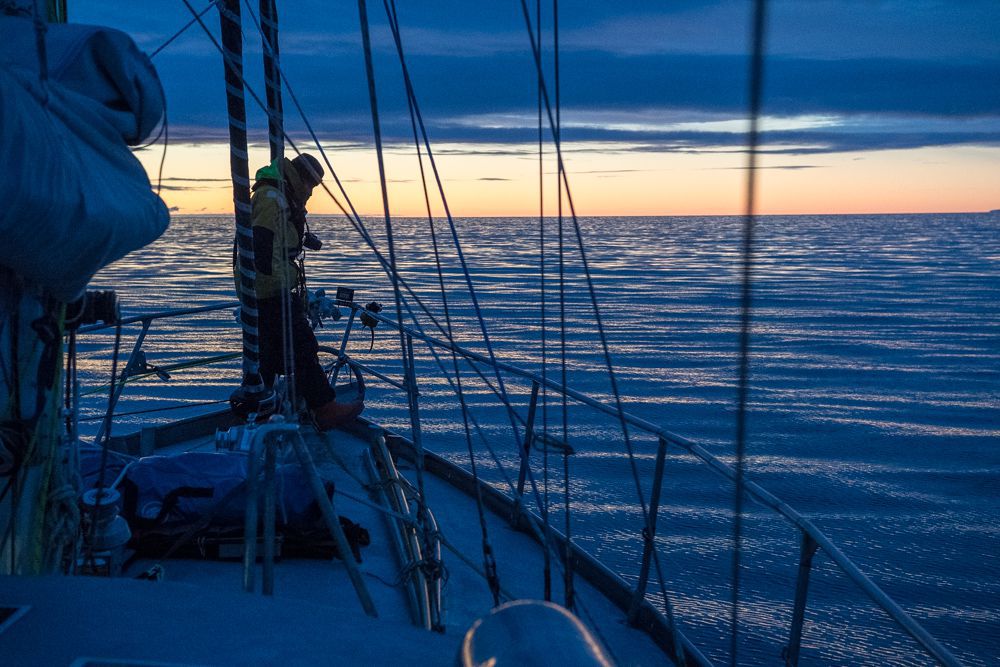
On August 14, the 48-foot sailing vessel Northabout was in a sheltered location north of Siberia, battling hurricane-force winds. Held in place by 100 feet of chain tied to an anchor, the crew hunkered down as the storm built through the late summer Arctic night.
At times, the anchor dragged across the bottom of the shallow sea, making a terrible grinding noise.
The seven-person-crew of the ship thought they might have to beach the vessel and brave the elements. Video footage and photos show them huddled below deck in survival suits.
“I’ve not been that scared for many a year,” said expedition leader David Hempleman-Adams, in an interview.
“… We were in shallow waters, and the anchor was dragging,” wrote 14-year-old crew member Ben Edwards in an as-yet unpublished ship’s diary entry provided to Mashable.
“Before we went into the saloon we had to get into our abandonment suits. Basically massive really thick wetsuits. They protect you somewhat if you end up in the sea. We looked like TellyTubbies,” Edwards wrote.
“I don’t mind telling you that I thought we were all going to die,” he added.
In trying to sail through both the Northeast and Northwest Passages in the same year — a feat that would have been impossible as recently as 2007 — Hempleman-Adams, Edwards and the rest of the Northabout’s crew ran smack into the capricious face of the new Arctic reality.
Sea ice is rapidly thinning and melting as the world warms, hitting the second-lowest level on record this year. At the same time, weather patterns in the Far North seem to be growing weirder and more menacing.
For example, the storm that hit the ship this summer was more typical of the intense tempests that sweep across the region during the winter.
The storm was one of several major low pressure areas that transported unusually mild air into the Arctic this summer, helping to shift and melt sea ice and vault temperatures above freezing in many areas.
The Northabout crew, for example, recorded a high temperature during that storm of 17 degrees Celsius, or 63 degrees Fahrenheit.
Hempleman-Adams, a veteran Arctic explorer, says he never experienced such warmth in the Far North before, and he was shocked at the lack of sea ice he saw during the journey.
Since the boat did not have protection against thick sea ice, potentially becoming stuck whenever it encountered ice floes of about 10 feet in thickness, its successful Arctic circumnavigation was only possible due to the rapidly warming world.
The Arctic is warming at double the rate of lower latitudes, which is having widespread consequences, from sea ice loss and melting of the Greenland ice sheet to earlier spring snow melt.








